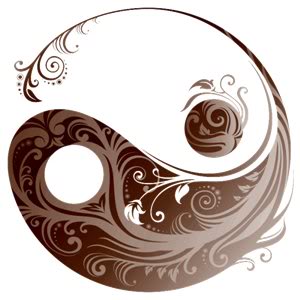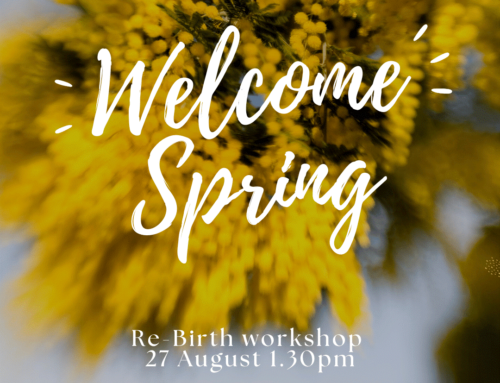You may have heard your teacher talk about the ‘Yoga Sutras of Patanjali’ in class before or perhaps your teacher focused on one for that particular class. The Sutras of Patanjali is a guideline for how to live a yogic life and were written by an Indian sage approximately 2000 years ago. Sutras are loosely translated as ‘threads’ and are simple ideas or statements that lead on to one another.
Practicing asana (yoga postures) while concentrating on a yoga sutra is great way to explore the perception we have about ourselves and to broaden or expand our self-made boundaries of who and what we are. By observing our minds response to being in a posture and then altering our attitude to meet the message of the sutra we can discover that a change or understanding within the mind can result in a change to our physical body. We can come closer to finding the comfort within the discomfort. By observing and experiencing the sutras in action we can then apply the understanding and wisdom we develop on the mat in our everyday life. It gives us the sense of ‘knowing’ that stays with us.
These particular sutras were written by Patanjali, they seem to be simple ideas but they have many layers and this is precisely why they are so valuable in our yoga practice on a day to day basis. I can read the sutras over and over again and I always seem to learn something new and it is often the case that I am then presented with a situation in my life where I can observe the sutras at work through my own experience. So here is my take on what the first four sutras mean.
1:1 atha- yoganusanum
Now is an exposition on Yoga.
My understanding of this sutra is that yoga, as a state of being can only be experienced now. When we get distracted by what has happened in the past or begin to project into the future then we attach emotions to these thoughts. As a result we allow these emotions to overwhelm us and by doing so, we become disconnected and forget or overlook the opportunity in the present. For example, over the last few years my Dad has been unwell and I have noticed that my thoughts can swing into the past of how it felt while this was happening. On the other hand, my thoughts can be projected into the future, feeling worried that he is going to get worse. Before too long, the emotions attached to these thoughts have already arisen and I lose the joy of the present moment.
The emotions attached to these thoughts, memories and projections are not facts. These emotions are tangible and are constantly changing. Yoga however, as a state of being, allows us to be truly present and it can be accessed at any time we choose to tap into it. This state of being is accepting the moment exactly as it is, it is the experience on oneness and balance, and it is the union of our body, mind and soul. Yoga is when we are truly conscience of being in the now.
1:2 Yoga-citta-vritti-nirodha
Yoga is the cessation of the fluctuations of consciousness.
This sutra explains how yoga is experienced when we have the ability to see something as a whole. We as humanity tend to label things as ‘positive’ or ‘negative’ and lean to either extreme within our perceptions. When we come to the realization that we can not have one ‘extreme’ without the other, then we reach a balance of the two. We begin to see that what we label in our society as being ‘positive’ or ‘negative’ are always linked. For example, in relation to my personal yoga practice, I could be in a yoga posture and my ego is telling me “this is too hard”, “you’re not good enough”. While on the other end of the spectrum the ego may also say “this is easy, go harder”, “you can do better than this”. When we attach to these internal ‘extreme’ thoughts we distract ourselves from ‘what is’. We overlook the opportunities within the present moment. It is only when we reach this neutral state of being when we can really experience yoga because it is only at this point when we have let go of our judgements.
1:3 tada-drastuh-svarupe-avasthanam
Then the seer abides in his / her own true nature.
When our judgements cease, then the true nature of ourselves are revealed. Our judgements cloud our true essence.
When we allow our minds to run off on a tangent then our perceptions of ourselves can become distorted. We know that the labels and the judgements we put on ourself is not the true self as it is constantly moving from one extreme to the other. It is when we have learned to still the mind that the true self is revealed and we can recognise it because it is neutral, we sit within acceptance and we have a sense of knowing.
1:4 vrtti-sarupyam-itaratra
At other times the seer identifies with the fluctuation of the mind and forgets his / her true essence.
If we choose to engage with the fluctuations of the mind we become easily distracted from who we really are. We become obsessed with the need to control, to label and to judge and so therefore are not able to really be present in the moment. A good example of this is how we can be consumed by the constant need to create the ‘perfect’ experience or the idea of us being the ‘perfect’ person. While our intentions are good, we want to be happy and we want those around us to be happy, we can easily forget that it is these external pleasures only offer temporary happiness. If these ‘external’ pleasures change then we experience suffering. Instead of being comfortable within ourselves and knowing that we are ‘enough’; just as we are, we create expectations that steer us away from our true nature. We have all had experiences in our lives at some point where we have felt contentment in where we are at. We feel ‘connected’ even though there may be chaos around us. It’s that sense of knowing that everything is ‘just as it should be’.
When we are not present then we miss the opportunity to be connected with our higher self (the soul, true essence) and as a result we suffer. It is when we do this that we experience highs and lows. It is only when we tap into our connection with our higher self that is in the moment, when we experience gratitude and acceptance for what is.
So there we have it, just a taster of what yoga reveals to us as we continue our practice. If you want to learn more about the ‘Yoga Sutras of Patanjali’ there are many great resources out there. BKS Iyengar’s ‘Light on the Yoga Sutras of Patanjali’ is a great read, as is Sri Swami Satchidananda’s Integral Yoga – The Yoga Sutras of Patanjali’.
Written By Erika Newberry Erika teaches Hatha and Hatha Vinyasa Yoga at Kundalini House
Monday at 12:15pm Mondays at 7:15pm Wednesday at 5:45pm Thursdays at 7:45pm Please visit the Kundalini House website for further details.







Leave A Comment